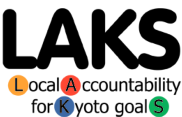


ENGLISH
ITALIANO
ESPAÑOL
POLSKI

ANNEX 2
Glossary of Terms Related to GHG Protocols and Inventories
Aim of this Glossary
• Introduce new participants in the LAKs Project to the terminology that is used in the International Local Government Greenhouse Gas Analysis Protocol (IEAP) and various technical documents related to the development of local government GHG inventories.
• To develop consistent language related to GHG protocols and inventories by all project participants.
• If appropriate, details on areas where this standard terminology may differ for a specific country will be included in each IEAP Country Supplement.
• Text in italics refers to other terms listed in this glossary
• For more terminology associated with the UNFCCC, IPCC, Kyoto Protocol or emissions trading schemes please go to: http://www.carbonpositive.net/viewarticle.aspx?articleID=44
Terminology List for Protocols, Inventories and Measures
Abatement: refers to the potential or actual greenhouse gas emissions reductions from implementation of an activity. The word ‘reduction’ is often used instead of ‘abatement’.
Analysis: a study of greenhouse gas emissions by sector, based on technical data as well as clearly stated assumptions. ‘Analysis’ is used to describe Community segment of greenhouse gas emissions measuring and reporting. [Note that ‘Inventory’ is the term used for the Government Operations segment.]
Anthropogenic emissions: GHG emissions created as a result of human activity.
Atmosphere: the gaseous envelope surrounding a planet. The Earth’s atmosphere consists of nitrogen (N2, 78%), oxygen (O2, 21%), and argon (Ar, 0,93%) plus many other very influential components including water (H2O, 0-1%), and the "greenhouse" gases, Ozone (O3, 0,00006%), and Carbon Dioxide (CO2, 0,038%).
Base Year: also referred to as baseline, the year for which a local government conducts a baseline emissions inventory and community analysis. It is recommended that the baseline(s) should be a year for which mostly complete data can be obtained. This can be a financial year or a calendar year, although local governments may like to align with the calendar years used by national governments for Kyoto Protocol or UNFCCC reporting. Different years can be used for Community and Government Operations base years.
Carbon Dioxide (CO2): a gas that is essential to living systems; is released by respiration and removed from the atmosphere by photosynthesis in green plants. The proportion of CO2 in the atmosphere has increased by about 25% since the burning of coal and oil began on a large scale. Atmospheric CO2 varies seasonally by a small amount, and the oceans contain many times more dissolved CO2 gas than is in the atmosphere.
Carbon Dioxide Concentration: the atmospheric CO2 concentration, at 353 ppmv (parts per million by volume) in 1990, is now about 25% greater than the pre-industrial (1750-1800) value of about 280 ppmv, and is higher than at any time in at least the last 160,000 years. The CO2 concentration is rising at about 1.8 ppmv (0.5%) per year due to anthropogenic emissions.
Carbon dioxide equivalent (CO2e): is the term for comparing the Global Warming Potential, or ‘greenhouse intensity’, of various greenhouse gases. Emissions of each greenhouse gas are converted to tonnes of carbon dioxide equivalent (tCO2e) by multiplying the mass of each gas emitted by the Global Warming Potential of the gas.
Chlorofluorocarbon (CFC): a compound of carbon similar to carbon tetrachloride (CCl4) or methane (CH4) but containing some chlorine and some fluorine. These gases are non-poisonous and inert at ordinary temperatures and easily liquefied under pressure, which make them excellent refrigerants, solvents, foam-makers and for use in aerosol sprays.
Chlorofluorocarbons (CFCs) do not occur naturally; they are synthetic products used in various industrial processes and also as propellant gas for sprays. Unfortunately they also damage the Ozone Layer of the atmosphere and the production and use of CFCs is now governed by international agreement (Montreal Protocol).
Cities for Climate Protection (CCP): refers to the international CCP Campaign developed and operated by ICLEI – Local Governments for Sustainability (ICLEI). In some countries this campaign is called Communities for Climate Protection.
Climate Change: is a preferred term to describe the effect and impacts of heat retention in the lower atmosphere as a result of absorption and re-radiation by clouds and gases (e.g. water vapour, CO2, CH4, and CFCs) of long-wave terrestrial radiation. Incoming short-wave radiation, including visible light and heat, is absorbed by materials that then behave as black bodies re-radiating at longer wavelengths. Certain substances (e.g. CO2) absorb long-wave radiation, are heated by it, and then begin to radiate, still as long-wave radiation, in all directions, some of it downwards. ‘Climate Change’ is the preferred term to describe the effects of anthropogenic greenhouse gas emissions rather than ‘greenhouse effect’ or ‘global warming’.
Community Segment: relates to the municipality, district or regional geopolitical area covered by the local government, i.e. the area within the local authority boundaries. The Community Segment includes the following sectors: residential, commercial, industrial, transport, waste and other (including agriculture).
Corporate Segment: see Government Operations Segment.
Covenant of Mayors: is a commitment by signatory towns and cities to go beyond the objectives of EU energy policy in terms of reduction in CO2 emissions through enhanced energy efficiency and cleaner energy production and use. Signatories pledge to implement a
Sustainable Energy Action Plan, including a baseline emissions inventory. For more information see http://www.eumayors.eu/
Emissions: means Greenhouse Gas Emissions
Emissions Factors: a measure of the amount of CO2e emitted per unit of energy consumed (for each fuel source, or for electricity used), or for each unit of waste added to a landfill. A combined emissions factor may provide a CO2e value, or separate factors may be supplied for CO2, CH4 and N2O for each fuel.
Emissions Analysis: the International Protocol (IEAP) requires the development of a baseline inventory for the Government Operations Segment and an emissions analysis for the Community Segment for each local government. (See Protocol for more information on IEAP.)
Employee Commute: the travel modes for council staff to and from work. This should not include travel in vehicles which are a part of the councils’ own vehicle fleet as that travel will be analysed under the ‘Vehicle Fleet’ sector.
Equity Share: a boundary issue for inventories related to the operation of an entity that is wholly owned or partially owned according to an equity share in the entity. Local governments should report emissions according to their control or equity share of the entity. When an entity is shared between local governments the emissions should be reported on an agreed basis which may be equity, or control, or some other basis that ensures the total emissions are reported, but not double counted. See also Operational Control or Financial Control or more information in the Protocol or your Country Supplement.
Financial Control: is a boundary issue for inventories related to the operation of an entity that may not be owned by local government but there is full authority to introduce and implement its operating policies. Local governments reporting according to financial control would be responsible for reporting emissions from 100 percent of the activities of which they had financial control. See also Operational Control or Equity Share or more information in the Protocol or your Country Supplement.
Forecast Year: the year for which participant local governments conduct their emissions forecast analysis. It is recommended that the year be appropriate to standard national or local government planning periods.
Framework: the GHG reduction process that local government participants undertake after they join the LAKs Project.
Global warming: see Climate Change.
Global Warming Potential (GWP): a measure of the potency of greenhouse gases to allow them to be compared. For example, CO2 has a GWP of 1 and CH4 has a GWP of 21, indicating that CH4 is 21 times as potent than CO2 as a greenhouse gas, therefore 1t of CH4 = 21tCO2e.
Government Operations Segment: refers to emissions from a local government’s own operations including facilities and vehicles owned or managed by council. The Government Operations segment includes the following sectors: buildings, vehicle fleet, employee commute, water/sewage, public lighting (streetlights), waste and other (including agriculture if applicable). This segment is sometimes called the Corporate Segment.
Green Electricity: also referred to as Green Power, this is the mechanism whereby a local government self generates from renewable energy resources or where they choose to pay an additional cost (premium) for electricity certified as generated from 100% renewable energy sources. Green electricity should be recorded in the appropriate section of the inventory tool so that the electricity used is accounted for, but the emissions factor will be considerably lower than grid electricity.
Greenhouse Effect: see Climate Change.
Greenhouse Gases (GHG): are gases that reduce the amount of earth’s radiation that escapes to space, with consequent warming of the lower atmosphere and the Earth’s surface. The concentration of the most important anthropogenic greenhouse gas, carbon dioxide (CO2), has already increased by 25% since the beginning of industrialization and particularly the combustion of fossil fuels. Deforestation also causes an imbalance between the absorption and release of CO2 by vegetation. Other greenhouse gases being released into the atmosphere in increasing amounts are methane (CH4), nitrous oxide (N2O) and the chlorofluorocarbons (CFCs e.g. hydrofluorocarbons, perfluorocarbons, and sulphur hexafluoride).
Greenhouse Gas Emissions: refer to releases of gases as a direct result from council and community activities such as CO2 from burning petrol, the release of CH4 from landfill sites, and the indirect release of greenhouse gas emissions that result from using electricity from non-renewable sources such as coal.
Halogenated Substance: in the context of climate change, this is a reference to the chlorinated and fluorinated compounds (CFC’s, HCFC’s) formed when halogens (especially chlorine, fluorine) combine with hydrocarbon molecules, thus becoming "halogenated".
HCFC: hydrochlorofluorocarbon: see chlorofluorocarbon.
HFC: hydrofluorocarbon: see chlorofluorocarbon.
IEAP: see Protocol.
Indicator: provides a means of comparing the energy consumed, or emissions released, by buildings or facilities, or vehicles, of different function or size. See Section 2.6.4
Inventory: is a detailed, itemised report on amounts of greenhouse gas emissions from various fuels and for various sectors. ‘Inventory’ is the term used to describe the Government Operations Segment greenhouse gas emissions measurement and reporting. [The word ‘Analysis’ is used to refer to the emissions report for the Community Segment.]
LAKs: means Local Accountability for Kyoto goalS, and is a project developed to help selected European cities measure their inventories and implement their GHG reduction targets. The LAKs project is co-funded by LIFE+, the European Commission’s Financial Instrument for the Environment.
Local Action Plan (LAP): is a plan of action for a local government to document proposals that will result in the reduction of GHG emissions. Preparation of the LAP is Phase 2 of the LAKs Project Framework and this plan documents the results of the local government’s GHG Inventory and community emissions Analysis, and the Emissions Reduction Goals, as well as the Emissions Reduction Implementation Strategy. The LAP outlines the strategic directions of the local government for achieving the reduction goals, and specific near-term actions and budget allocations. It is recommended that the LAP be approved by council to increase the political commitment to this project.
Local Government: a sub-national local authority responsible for the governance of a defined geopolitical area of a country. Local governments may be called cities, municipalities, towns, boroughs, counties, districts, regions or councils.
Measures: These are actions planned or undertaken to reduce the emissions of greenhouse gases.
Methane (CH4): a gas produced by anaerobic decomposition of organic materials in wetlands, urban landfills, and rice paddies, and also in the stomach of cattle and other ruminant animals. CH4 is the principal constituent of natural gas. The methane concentration in the atmosphere has been rising steadily for several centuries, keeping pace with the increase in the world population and expansion of the world economy. Major sources of methane emissions include leakage and venting from oil and gas production, agricultural emissions from enteric fermentation and animal wastes, and (of most relevance in cities) methane emissions from urban landfill sites.
Municipal Solid Waste (MSW): the waste material collected within a city and taken to landfill or to an incinerator.
Nitrous Oxide (N2O): is a potent greenhouse gas produced in relatively small quantities from sources such as fuels burnt in motor vehicles and from the use of agricultural fertiliser. Nitrous oxide should not be confused with nitrogen oxides (NOx).
Operational Control: is a boundary issue for inventories related to the operation of a local government controlled entity or a subsidiary that has the full authority to introduce and implement its operating policies. The entity that holds the operating license for an operation typically has operational control. See also Financial Control or Equity Control or more information in the Protocol or your Country Supplement.
Ozone: an ozone molecule consists of three atoms of oxygen (O3), in contrast to normal oxygen in the atmosphere (O2). Ozone is much more reactive than oxygen and is toxic to human beings and living matter. As a pollutant at ground level it is causing some damage to forests. Ozone absorbs strongly in certain wavebands, and therefore prevents damaging ultraviolet radiation from reaching the ground. In the stratosphere it functions both as a greenhouse gas and as a filter for ultra-violet radiation. A fall in the total ozone concentration in the atmosphere, and consequent rise in the penetration of ultra-violet radiation, causes deleterious effects such as increased rates of skin cancer.
ppmv: parts per million by volume
Protocol: means the International Local Government GHG Emissions Analysis Protocol (IEAP). This protocol can be downloaded from http://www.iclei.org/ghgprotocol
Quantification: relates to the measurement, calculation and reporting of greenhouse gas emissions inventories and reductions from GHG reduction measures.
Ramp-in: this term used to describe the progressive introduction rate of a measure. For example, a measure to insulate all houses within a municipality from 2010 to 2015 would be said to be "ramped-in" over 5 years.
Record: data entered into an inventory tool that may be from a single meter, or site or facility, or a group of sites or facilities.
Reduction: the potential or actual lowering of the level of greenhouse gas emissions through the implementation of a measure. The term ‘Reduction’ may be used in place of ‘Abatement’.
Segment: the scope of emissions that are analysed (e.g. Government Operations segment or the Community segment).
Sector: a sub-division of areas within the Government Operations or Community segments such as buildings, vehicle fleet, residential, commercial, transportation, etc.
Stratosphere: the layer of the atmosphere above the troposphere extending to a height of about 50 km.
Target: the goal(s) for the reduction of emissions established by your council. It is recommended that local governments establish, as a minimum, the national targets on renewable energy and greenhouse gas emission reductions established in March 2007 by the European Council. These targets include:
• a reduction of at least 20% in greenhouse gases (GHG) emitted by 2020 – rising to 30% if there is an international agreement committing other developed countries to "comparable emission reductions and economically more advanced developing countries to contributing adequately according to their responsibilities and respective capabilities".
• A 20% share of renewable energy consumption by 2020 and an additional target of 10% renewable energy in transport (under certain conditions).
Troposphere: is the lowest layer of the atmosphere, where almost all weather phenomena develop. It takes its name from the Greek word 'tropos' meaning 'a turn'. It is the atmospheric layer where turning and convective mixing is dominant.
Verification: is the independent data review process defined under the Kyoto Protocol and the European Emissions Trading Scheme (ETS). For the LAKs Project it is important for local governments undertake a substantial internal data review process to confirm the validity of their inventory. However it is NOT recommend that local governments implement an expensive full verification review (at this stage). See the Protocol or your Country Supplement for more information.
VKT: Vehicle kilometres Travelled is a data source that may be used in developing the analysis of the Community transportation emissions.